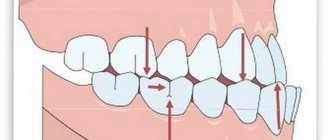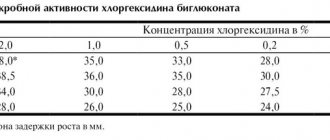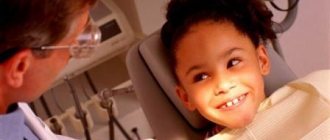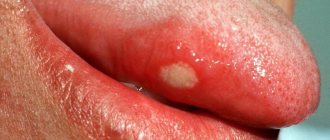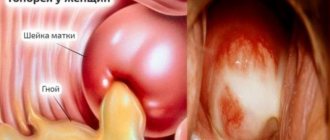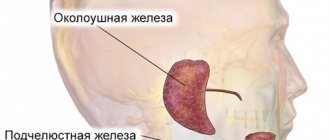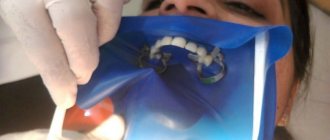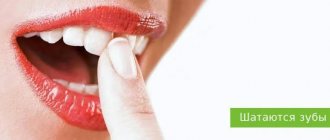Ultracaine D-S forte. Carpules 1.7 ml
Active substance:
– articaine hydrochloride 40 mg/ml. Note, 40 milligrams in one milliliter! This means that in one carpool there are 68 mg. This is actually very important. Why - see below.
– epinephrine hydrochloride 12 mcg/ml. Again, note that we are talking about micrograms (millionths of a gram) per milliliter. It turns out that the carpul contains 20.4 mcg of epinephrine hydrochloride. Well. or 17 mcg, in terms of pure adrenaline.
Inactive substance:
– sodium disulfite (sodium metabisulfite) – 0.5 mg/ml (0.85 mg/carpule)
– sodium chloride (saline solution) – 1 mg/ml (1.7 mg/carpule)
– water – everything else.
Other information:
According to a number of studies (A. I. Marakhova, M. A. Zhuravleva et al., 2015), the drug Ultracaine D-S forte, according to high-precision chromatography, contains about 0.047% of impurities, which the authors attribute to articaine derivatives.
The pH of the Ultracain D-S forte solution is 3.960. Moreover, pH fluctuations are allowed within the range of 3.0-5.0
Origin:
Sanofi-Aventis Deutchland GmbH, Germany.
Ultracaine for toothache. Features of the use of Ultracain in dentistry - detailed instructions
The good old Lidocaine has been replaced by the modern and fast-acting drug Ultracaine.
Its appearance can be safely called a small revolution in dentistry, as the range of manipulations with anesthesia and the age of patients from 4 years have expanded.
The article will tell you about the principle of action of the anesthetic, contraindications, pharmacokinetics, effectiveness and types of Ultracaine.
Brief information
Ultracaine is a transparent liquid, without specific aromas or by-products.
The medical product belongs to the amide subgroup of anesthetics with high purification parameters and does not contain antiseptic substances and ethylenediaminetetraacetic acid (EDTA), which often cause an allergic reaction in patients.
In dentistry it is used as an anesthetic drug for local or conduction anesthesia. The active reagent is articaine hydrochloride.
The mechanism of action of the drug Ultracain is a local analgesic effect. It blocks depolarization of the nerve ending membrane. Because of this, the nerve impulse does not pass through.
Ubistezin forte
Active substance:
– articaine hydrochloride 40 mg/ml , which corresponds to 68 mg in one carpule.
– epinephrine hydrochloride 12 mcg/ml , which corresponds to 17 mcg of adrenaline in the capsule.
Inactive substance:
– sodium sulfite – 0.6 mg/ml (1.02 mg in carpool)
– sodium chloride – 1.125 mg/ml (1.913 mg in carpool)
– water – everything else.
Other information:
Stabilization of Ubistezin by pH is carried out with a buffer solution of hydrochloric acid and sodium hydroxide, which are obviously present in the form of impurities, but for some reason are not indicated in the analytical passport.
The pH of the Ubistezin forte solution is 3.90. The pH of the solution may vary from 3.6 to 4.4.
Origin:
3M Deutchland GmbH, Germany
===========================
In general, what can I say about these two drugs... the difference between them, as you can see, is very small. So insignificant that you have to be a completely anesthetic sommelier or a drug addicted chemist to notice it. Someone here argued that the whole difference is in the pH value, but it is also very, very insignificant.
So why do doctors, and very well-known and authoritative ones, claim that Ubistezin works worse than Ultracaine? And why is there a legend among dentists that Ultracain is more effective and safe than Ubistezin?
We decided to look into this.
Types of anesthesia before tooth extraction
In most cases, local anesthesia is sufficient for any dental procedures. Typically, this is one or more injections into the gums. Some clinics perform three-stage anesthesia, which completely eliminates pain. In this case, an anesthetic gel is first applied, then a short injection is given, and after some time a sufficient dose of anesthetic is administered. Sometimes it also becomes necessary to perform a similar operation under general anesthesia. What anesthesia for tooth extraction is required in each specific case is determined by the doctor in accordance with individual characteristics.
Most often, local anesthesia is sufficient. Such anesthesia relieves the patient 100% of pain. Only tactile sensitivity is preserved, which can also cause discomfort, but not severe. There are several types of local anesthesia.
- Application anesthesia relieves pain only with superficial intervention. It is usually used before an injection to make insertion of the needle painless. Sometimes it is indicated when removing baby teeth in children. This anesthesia is carried out using a gel or spray based on lidocaine or benzocaine. They are applied to the gums.
- Infiltration anesthesia is the most common method. In this case, pain relief during tooth extraction is administered by injection. Usually you need 2-3 injections on one side and the other of the diseased tooth.
- Conduction anesthesia involves injecting an anesthetic into the area of the nerve. After this, the entire area innervated by it loses sensitivity. It is usually used only on the lower jaw.
- Trunk anesthesia is used in serious cases or when the patient is hypersensitive. In this case, the medicine is injected into the base of the skull.
In addition, sometimes a method such as sedation is also used. This is the administration of intramuscular or intravenous sedatives. They calm the patient, increase the pain threshold, and relax.
Anesthesia experts.
A quick survey of doctors (113 people in total) showed that the number of fans of one or another anesthetic is approximately equal. Almost 98.9% of doctors explain their fanaticism by habit, but there are no clear answers to the question “why did you choose this particular anesthetic?” We have not received. In addition, to the question “what is the difference between Ubistezin and Ultracaine D-S forte?” we received the following responses:
In my opinion, any fanaticism is bad and can affect the results of the study, so we invited independent experts who have never performed anesthesia in their lives. This means that their opinion is absolutely unbiased and can be trusted.
These are members and employees of Tseleevo Golf and Polo Club. With HCP penis length not exceeding 28.0 cm.
Need for general anesthesia
Sometimes it becomes necessary to treat a patient under general anesthesia. This is necessary if the usual painkiller during tooth extraction does not help, for example, with a low pain threshold or fear of dentists. General anesthesia is also used in patients with various psychological or neurological disorders, as well as with an increased gag reflex. When extracting a tooth, this is rarely required, since the procedure is short, but during long-term treatment, complex surgery or complete implantation, general anesthesia is necessary. It uses trichlorethylene, administered through a breathing mask or injection drugs: Ketamine, Propanidide, Hexenal.
Research method.
In general, we asked our experts to make a drive (long shot) with two carpules - Ubistezin and Ultracain. Tests were carried out with a Titleist Practice ball and different drivers at a side wind speed of 0.5-1 m/s. A total of 10 injections of drive anesthetic were made from each type of carpule.
Research results and discussion.
Based on the results of the study, experts made the following conclusions:
- Doctor Vasiliev, are you completely stoned there, or what? – in general, a correct judgment. Non-negotiable.
– what kind of granny is this anyway? – rather a question rather than a result.
– getting drive from an anesthetic carpule is strange, to say the least. Respected experts told me the same thing.
– the length of the drive does not depend in any way on the brand of anesthetic. The effectiveness of anesthesia, obviously, too.
Articaine or ultracaine, which is better? It doesn't hurt! Modern methods of anesthesia
We are publishing an article by Natalya Lvovna Mayorova, a dentist and therapist, head of the therapeutic department of the Dentalika clinic.
Pain relievers used in modern dental practice can work wonders. After receiving an anesthetic injection, the patient does not feel any pain or even particularly unpleasant sensations. To ensure that the injection itself is painless, before the procedure the doctor “freezes” the injection site with a special preparation with a delicious smell of cherry, lemon, or apple.
Local anesthesia is the main method of pain relief used in dental practice. With local anesthesia, the patient remains fully conscious, and this allows the doctor to fully control the entire course of treatment, communicate with the patient, and monitor your reaction.
The quality of dental interventions depends on the results the doctor obtained during local anesthesia. Therefore, achieving 100% pain relief is necessary not only for the patient, but also for the doctor, in order to carry out treatment calmly, slowly, and efficiently. Hence the following requirements for local anesthetics:
- they must have a strong analgesic effect, easily penetrate into tissues and remain there for as long as possible;
- have low toxicity, causing a minimum number of both general and local complications
Based on these wishes, we chose several widely used drugs:
- Ultracaine DS forte (4% articaine, adrenaline 1:100,000);
- Ultracaine DS (4% articaine, adrenaline 1:200,000);
- Scandonest SVC (3% mepivacaine; without vasoconstrictors - adrenaline).
Now in more detail about their action.
Ultracain DS
The analgesic basis of the first two drugs is ARTICAINE (amide anesthetic from the thiophene series), an antispasmodic - lowers blood pressure. It is characterized by rapid action - anesthesia occurs in 0.5-3 minutes. Articaine is 2 times stronger than lidocaine and 6 times stronger than novocaine (anesthetics of previous generations), less toxic, relatively quickly eliminated from the body. Its half-life is, on average, 22 minutes, that is, all traces of the drug disintegrate in 44 minutes and are then completely eliminated from the body. Has high penetrating ability. It is distinguished by high purity of the solution. Allergic reactions to articaine are very rare - one in one hundred thousand injections; the use of articaine, according to studies, is safe in 99.4% of cases. They also contain a vasoconstrictor (a substance that causes constriction of blood vessels and a decrease in blood flow in them) - adrenaline. The use of a vasoconstrictor continues and enhances anesthesia. The drug also contains antioxidants (sulfites) - substances that prevent the oxidation of adrenaline.


